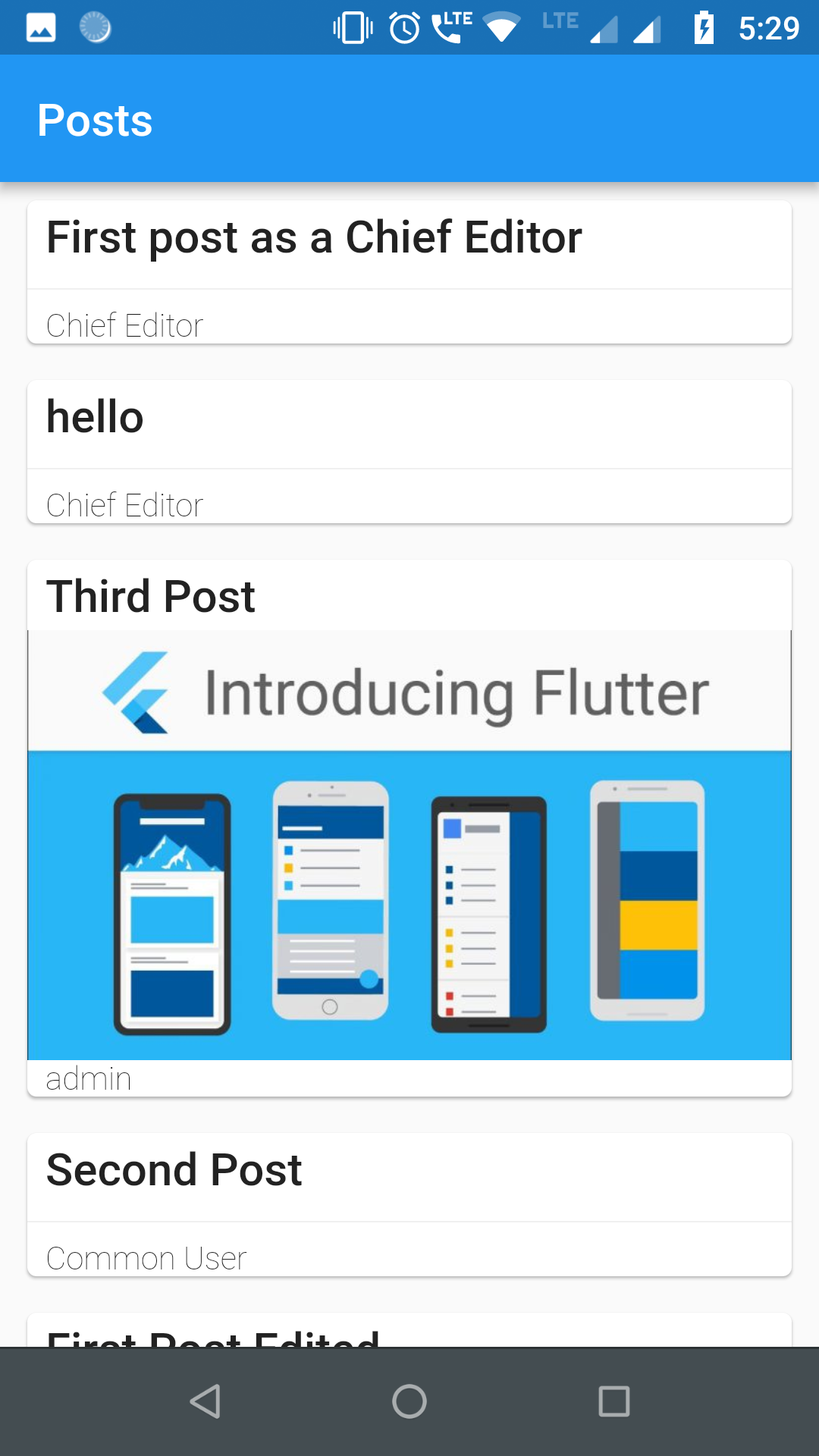This library uses WordPress REST API V2 to provide a way for your application to interact with your WordPress website.
For authentication and usage of administrator level REST APIs, you need to use either of the two popular authentication plugins in your WordPress site:
- Application Passwords
- JWT Authentication for WP REST API (recommended)
Find your pubspec.yaml in the root of your project and add flutter_wordpress: ^0.1.4 under dependencies:
import 'package:flutter_wordpress/flutter_wordpress.dart' as wp;wp.WordPress wordPress;
// adminName and adminKey is needed only for admin level APIs
wordPress = wp.WordPress(
baseUrl: 'http://localhost',
authenticator: wp.WordPressAuthenticator.JWT,
adminName: '',
adminKey: '',
);Future<wp.User> response = wordPress.authenticateUser(
username: 'ChiefEditor',
password: 'chiefeditor@123',
);
response.then((user) {
createPost(user);
}).catchError((err) {
print('Failed to fetch user: $err');
});Future<List<wp.Post>> posts = wordPress.fetchPosts(
postParams: wp.ParamsPostList(
context: wp.WordPressContext.view,
pageNum: 1,
perPage: 20,
order: wp.Order.desc,
orderBy: wp.PostOrderBy.date,
),
fetchAuthor: true,
fetchFeaturedMedia: true,
fetchComments: true,
);Future<List<wp.User>> users = wordPress.fetchUsers(
params: wp.ParamsUserList(
context: wp.WordPressContext.view,
pageNum: 1,
perPage: 30,
order: wp.Order.asc,
orderBy: wp.UsersOrderBy.name,
roles: ['subscriber'],
),
);Future<List<wp.Comment>> comments = wordPress.fetchComments(
params: wp.ParamsCommentList(
context: wp.WordPressContext.view,
pageNum: 1,
perPage: 30,
includePostIDs: [1],
),
);void createPost(wp.User user) {
final post = wordPress.createPost(
post: new wp.Post(
title: 'First post as a Chief Editor',
content: 'Blah! blah! blah!',
excerpt: 'Discussion about blah!',
author: user.id,
commentStatus: wp.PostCommentStatus.open,
pingStatus: wp.PostPingStatus.closed,
status: wp.PostPageStatus.publish,
format: wp.PostFormat.standard,
sticky: true,
),
);
post.then((p) {
print('Post created successfully with ID: ${p.id}');
postComment(user, p);
}).catchError((err) {
print('Failed to create post: $err');
});
}void postComment(wp.User user, wp.Post post) {
final comment = wordPress.createComment(
comment: new wp.Comment(
author: user.id,
post: post.id,
content: "First!",
parent: 0,
),
);
comment.then((c) {
print('Comment successfully posted with ID: ${c.id}');
}).catchError((err) {
print('Failed to comment: $err');
});
}- Implementing OAuth 2.0 authentication.
